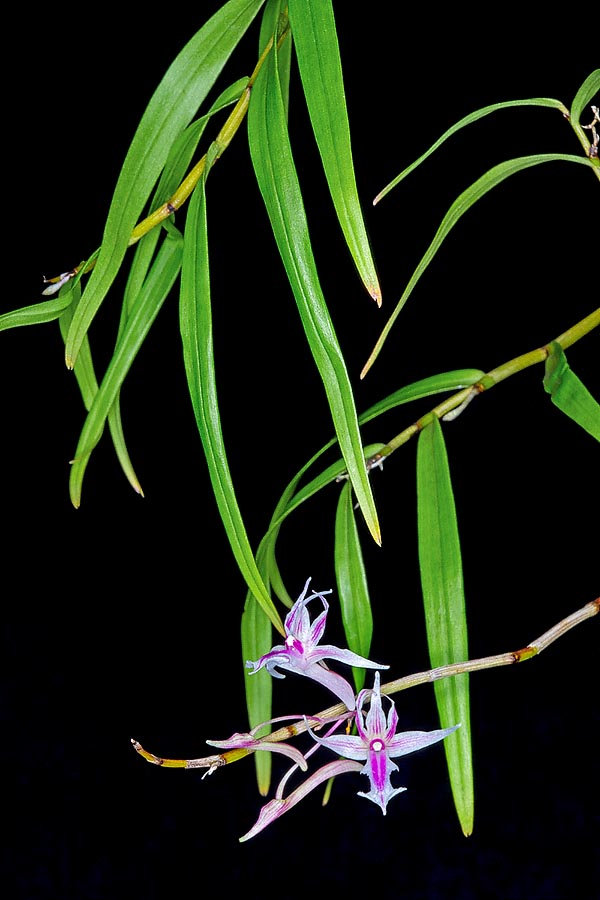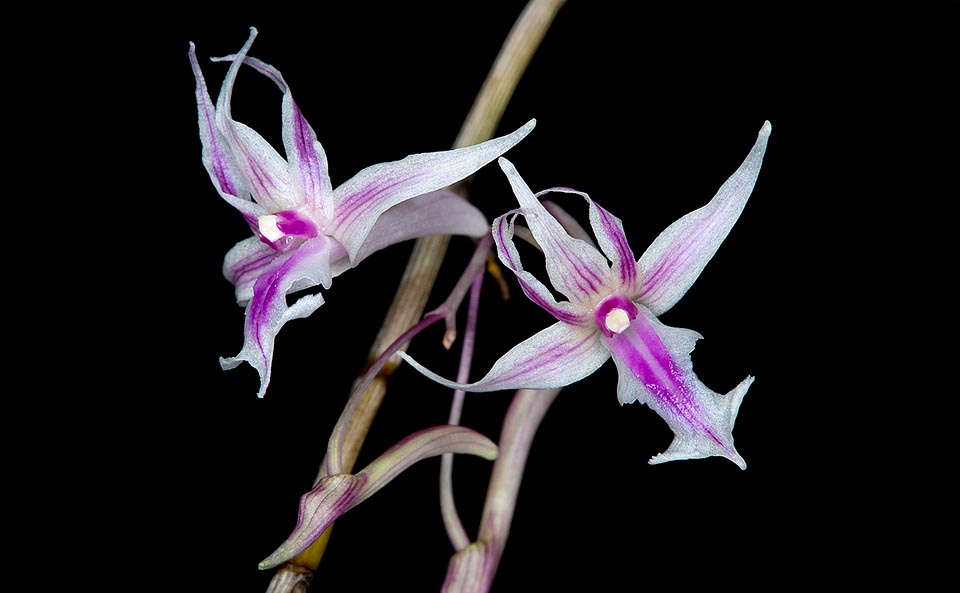Family : Orchidaceae

Text © Pietro Puccio

English translation by Mario Beltramini

Native to Sulawesi, Dendrobium rantii is a deciduous epiphyte with drooping posture © Giuseppe Mazza
The name of the genus is the combination of the Greek substantives “δένδρον” (dendron) = tree and “βίος” (bios) = life, with reference to the numerous species of the genus living on the trees; the species is dedicated to the botanist and collector Anton Rant (1875-1942).
Common names: Rant’s dendrobium (English).
The Dendrobium rantii J.J. Sm. (1934) is a deciduous epiphyhtic species with thin ramified stems, lithe, drooping, provided of linear alternate leaves with irregularly bilobed apex.
Racemose infllorescences from the upper nodes of the stems having no leaves, drooping, bearing up to 8 flowers, of 2-3 cm of diameter, of white colour with purple pink veins lasting about two weeks.
Linear-lanceolate sepals with slightly retroflexed apex, the two lateral arranged almost horizontally and merged at the base to form a long spur (mentum) with obtuse apex, linear petals with wavy margins and apex long pointed and retroflexed and penta-lobate labellum, a rarity in the genus.
It reproduced by seed, in vitro, and by division.
Species with small, but particularly elegant, flowers, requires high luminosity, intermediate temperatures, 20-30 °C, constant humidity, 70-85%, and air always in continuous movement.
Regular and abundant waterings from spring to autumn, slightly more spaced in winter, but without ever allowing the substratum to dry up completely, utilizing rain water, demineralized or by reverse osmosis.
Monthly fertilizations utilizing a hydrosoluble balanced product, with microelements, diluted at the 25-30%.
Due to the drooping posture it is usually cultivated in suspended pots, unless you do not predispose appropriate supports, with compost based on medium-sliced bark fragments, with addition of inerts, such as expanded polystyrene, to improve the drainage and favour the aeration of the roots, or mounted on small logs, bark or rafts covered by sphagnum.

Thin stems, ramified and lithe, with linear alternate leaves and racemose inflorescences from upper nodes without leaves with even 8 2-3 cm flowers © Giuseppe Mazza
Synonyms: Eurycaulis rantii (J.J.Sm.) M.A.Clem. (2003).
→ For general notions about ORCHIDACEAE please click here.
